Nintendo is Great is a Substack devoted to exploring the world of Nintendo - their games, their consoles, their merchandise - in mostly chronological order, starting with the NES and continuing to the upcoming Switch 2.
Some posts are free, some are for paid subscribers only. Don’t forget to sign up below. Thanks for reading!
Welcome, one and all, to the very first official issue of the “Nintendo is Great!” newsletter!
The goal with this Substack has, and will forever be, to play and discuss (with you) every game ever released for a Nintendo console/handheld in chronological order, beginning with the NES and proceeding all the way to the upcoming Switch 2.
But as stated in this post and starting with Issue #1 of Nintendo is Great, how I accomplish this goal is going to change.
With each newsletter, I will feature overviews of all US game releases, discussions of peripherals like the Famicom Disk System and Game Genie, glimpses into notable Japan-only Famicom releases, and the origins of fun ephemera like Nintendo Fun Club newsletters, Nintendo Power, and Nintendo Power Strategy Guides. If I discover any interesting factoids, pictures of cool old merchandise, etc. I’ll probably throw those in there as well.
At first, these newsletters will cover only the NES, as Nintendo’s presence in the US was solely NES-focused until the Game Boy’s debut in 1989 (with the occasional Game & Watch release here and there).
As Nintendo starts juggling multiple systems and their history as a gaming company grows beyond their NES-focused output, the newsletters will grow as well, eventually covering every Nintendo handheld and console like the SNES, N64, GBA, etc. and highlighting every game released for said systems within any given month.
For the last four months, I’ve explored the 17 NES launch games, all of which were initially released in October 1985 for the NES’ New York City test launch.
As the NES expanded into the Los Angeles market in February 1986 and nationwide across the United States in June ‘86, 19 additional games were released for the console within the 1986 calendar year. I’ve covered all of those as well.1
Today’s newsletter covers January through March 1987, a time when the NES was really just getting started. While the console sold a respectable 1.1 million units in America in 1986, future must-have titles that would drive overwhelming sales in 1987 and 1988 – titles like The Legend of Zelda, Metroid, Castlevania, etc. – hadn’t been released yet. By the end of 1988, NES sales would approach 10 million in the US alone, and the console would become an unstoppable sales juggernaut for the next three years. Just like Atari had in the late 70s/early 80s, “playing Nintendo” would become synonymous with playing video games.
But I don’t want to jump too far ahead here. Let’s head back to the first quarter of 1987 and see the games that players might anticipate.
NEW RELEASES!
TROJAN
Before a generation was programmed to associate the word “Trojan” with a condom brand2, Trojan was Capcom’s fourth NES release, right after 1942 (decent), Commando (solid), and Ghosts ‘N Goblins (awful).
Capcom would later become one of the NES’ top-tier third-party developers, bringing us classics like the Mega Man series and all those lighthearted Disney cartoon adaptations, such as DuckTales and Chip ‘N Dale Rescue Rangers.
But this is February 1987, and Trojan is Capcom still finding their way.
Based on the arcade beat-em-up of the same name, you control Hero-Trojan, a fellow whose murky motives have apparently made him lots of enemies. Heavily armored baddies pop out from every corner just to take a chunk of Trojan’s flesh. One might think Trojan’s sword is sharp enough to swiftly dispatch all his enemies, while his shield readily protects him from all threats. Hah! Enemies wield maces and clubs, throw axes and dynamite, and drop explosives on him from on high. Trojan’s sword is formidable and his shield effective, but they can only do so much against the onslaught.
Trojan is perfectly fine while you’re playing it, but I can never remember anything about it once I’m finished. Which should tell you all you need to know.
PRO WRESTLING
The NES hasn’t even been out two years yet, and Pro Wrestling is already its third wrestling game next to M.U.S.C.L.E. and Tag Team Wrestling. The latter two are unbelievably horrendous examples of the sport, especially Tag Team, which has you selecting moves from a move list while you’re in the ring.
Pro Wrestling is thus the first NES game to look and feel like a proper over-the-top wrestling experience. The crazy cast of characters feel beamed out of mid-80s wrestling, both Western and Eastern expressions. A camera man films you and your opponent’s every move. The crowd cheers when they like what they see. Your goal is to become the Video Wrestling Federation Champion, not just fight your way through a series of matches for no reason. And most importantly, it all feels staged.
Actually, scratch that. The most important feature of Pro Wrestling is its two-player mode. One-player Championship Mode is great, but wrestling games are meant to be enjoyed with friends.
SLALOM
Slalom is Rare’s first game on a Nintendo platform, and wouldn’t you know it, it’s not a 3D platformer collect-a-thon.
Heck, Slalom isn’t a platformer at all. It’s a timed racing game where a skier with a generous booty (wrapped within a revealing orange jumpsuit) skis down three large mountains. Each mountain has eight courses, littered with flag poles, snowmen, trees, and other miscellaneous debris. Do tricks for points, ski in between the flag poles for a speed boost, avoid the crap that gets in your way, race down mountains at 100 km/hr.
Slalom is a wintry take on Excitebike, and it’s a blast. Just don’t get lost in your skier’s ample curvature.
VOLLEYBALL
Volleyball is indeed a volleyball game, but not the fun-in-the-sun beach volleyball, and not in the chillin-with-friends-at-a-park volleyball. No, this is technical six-player Olympic-style volleyball, and it absolutely sucks the fun and vitality out of the sport. All the sprites are adorable, and you can play as the Soviet Union volleyball team, if you want to get your comrade on. But switching players, discerning where the ball is going to land, heck, hitting the volleyball… all of these should be simple commands, but they’re a chore to execute with any sort of precision or skill.
Nintendo developed Volleyball, and while it’s not as worthless as, say, Donkey Kong Jr. Math, it will forever reside in the bottom-tier of their first-party NES output.
THE FAMICOM DISK SYSTEM - JAPAN ONLY!
On February 21st, 1986, Nintendo released the Famicom Disk System, an exclusive-to-Japan add-on that sat underneath the Famicom and played floppy disk games as opposed to cartridges.
Unlike some add-ons, however, the Disk System was all but a necessity upon its release. While the Famicom was a slam-bang success in Japan, retailers had trouble keeping games in stock. Chip shortages ensured that Famicom cartridge prices remained high and stock remained low. This was a problem. People loved the Famicom and they wanted to buy Famicom games, but they couldn’t because they were either a) too expensive or b) out of stock.
Nintendo’s solution was to create a reasonably priced addition to the Famicom, one that could utilize a much more affordable proprietary format. Enter the Quick Disk (or Disk Card, as Nintendo titled their iteration), a 3-inch floppy disk that Nintendo chose due to its incredibly low cost.
According to Wikipedia, The Disk Card format “increased storage capacity that allowed for larger games, additional sound channels, and the ability to save player progress.”
Indeed, many of the biggest (and best) NES games of 1987 – The Legend of Zelda, Metroid, and Kid Icarus - started out as Famicom Disk System games.
The Famicom Disk System games were, indeed, affordable. Instead of plunking down 7000 yen on a copy of Urban Champion (can you even imagine), you could purchase a copy of Akumajou Dracula (Castlevania) for 3000 yen. A steal!
Initially the Famicom Disk System was a massive success, selling over 2 million units by the end of 1986. For context, the Famicom, by January 1987 had sold about 9 million units. So the Famicom Disk System, in its first year alone, had nearly a 25% attachment rate.
Because this newsletter has strict chronological bylaws, this issue is only covering the Famicom Disk System’s history up to its first year of sales, February 1986-February 1987.
So far, everything’s lookin’ up for Nintendo! Will the Disk System maintain its momentum? Will its attach rate grow with fanboy fervor through the remainder of the 1980s, or will consumers grow weary of the Disk Card and move onto cheaper, floppier formats? We’ll check in with the Disk System when we hit January 1988!
THE NINTENDO FUN CLUB IS BORN!
Congratulations! You’ve just received a Nintendo Entertainment System Control Deck, complete with two controllers and a Super Mario Bros. game pak for Christmas. Your parents are tired, you are elated. Now all that’s left to do is make your dad plug the system in and play until your parents threaten to take it away.
The NES works great, the games are just too fun, but you have a problem: Super Mario Bros. is really stinkin’ hard. In fact, every game you attempt to play – Kung Fu, Excitebike, Ninja Kid – just decimates you with its difficulty. You are mystified yet intrigued. Why do you want to enhance your skills at these games that pummel you so? Why do you keep returning to them, despite the pain they cause you?
It must be love, you are certain. No one - not your parents, your teachers, not even Mr. Fluffles your beloved teddy - can convince you otherwise. You know you love Nintendo, and you want to get better at Nintendo games, but you’re not sure how to show your devotion and become a Pro Gamer at the same time.
Well, you’re in luck! Not only does Nintendo have Game Counselors ready and waiting to give you the hottest gaming tips for a mere $1.50 a minute, but they’re also inviting you into a very private, very exclusive Nintendo club for their favorite gamers. The best part? The club is FREE to join
You scrawl your filthy signature onto the membership card, shove it into the mailbox, and pace inside your house for a grueling 4-6 weeks. Will this torturous wait never end! you exclaim loudly to your mother every time she looks at you. She has no response. Why would she, she doesn’t understand your desire to transcend your limited elementary school preoccupations and soar into the gaming heavens a la Chubby Cherub?
A month and change later, you’ve lost weight, your schoolwork has suffered, and you’re no better at the meager games your parents have purchased you, but it doesn’t matter, because your Nintendo Fun Club membership packet has arrived! You tear into it, blinded by its contents.
A Welcome Letter!
Your very own personalized membership card!
A 90-day warranty pamphlet for some reason!
And, of course, the very first issue of the Nintendo Fun Club Newsletter! What wonders await inside?
“Wow, Howard Phillips has already played 10,000 hours of Nintendo? He’s a legend!”
“Hogan’s Alley looks amazing! Wonder if it’s better than Super Mario Bros?”
“Super Mario looks a little scary in real life, hope Wil and his brother are OK.”
“After I get awesome at Excitebike, I’ll get my scores printed in the next issue of the Fun Club!”
“Woah, I thought the fireworks were random this whole time!”
“Oh man, I need to get that “How to Win at Super Mario Bros.” book, otherwise I’ll never be the best gamer that ever lived.”
Clearly, becoming a Nintendo Fun Club member is the best decision you’ve ever made and likely ever will make. You’re not sure when the next issue will arrive, or if your mom will order you all the Fun Club merch that Howard Philips implores you to purchase, but at least, for this small moment, you are happy.
*all images courtesy of eBay, RR Auction, and the Internet Archive
NEXT TIME: Issue #2 - April-May 1987 includes thoughts on long-awaited games like Rush’N Attack and Castlevania! Plus we’ll take a peek at some Famicom titles and the “How to Win at Super Mario Bros. Book,” the first ever Nintendo strategy guide!
COMING SOON FOR PAID SUBSCRIBERS: Every 1986 Famicom Disk System game, ranked.
All of these reviews are available in my archives, and while some are free to read, others are for paid subscribers only
remember Trojan Man, the mascot who swooped in to save hapless dudes and dudettes from getting it on without latex protection? What a wild concept.





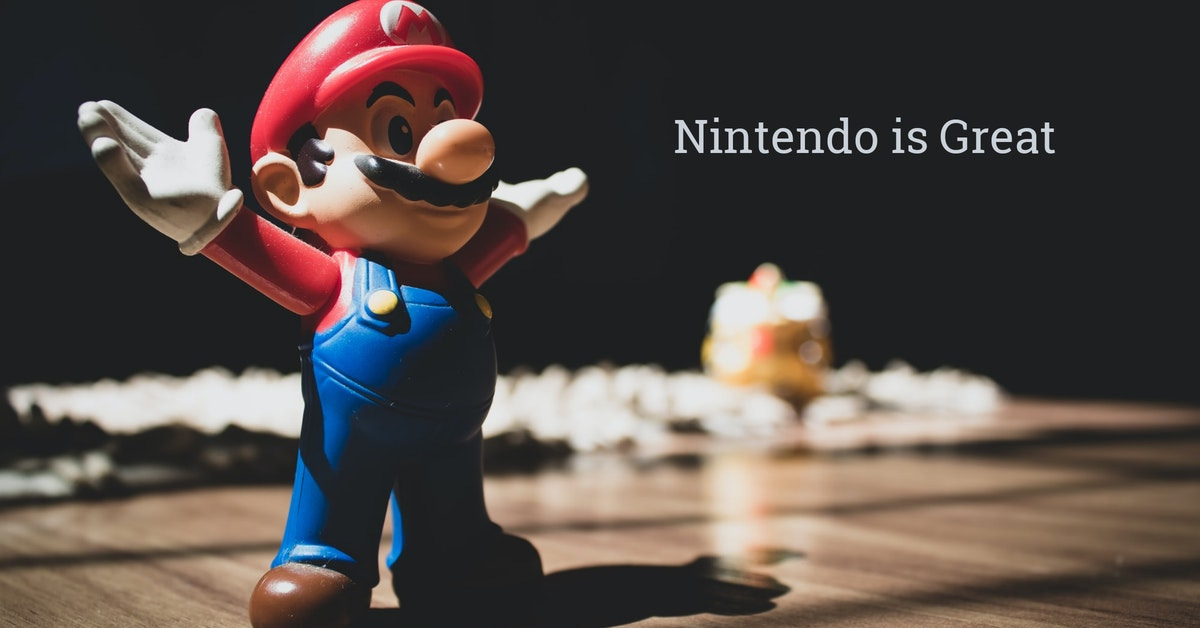






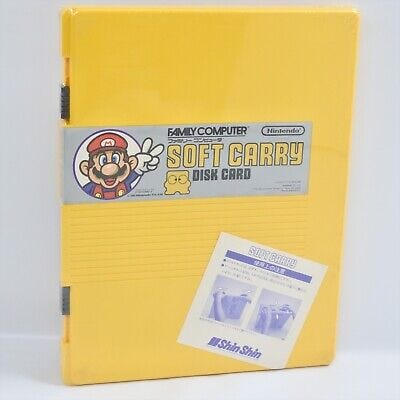
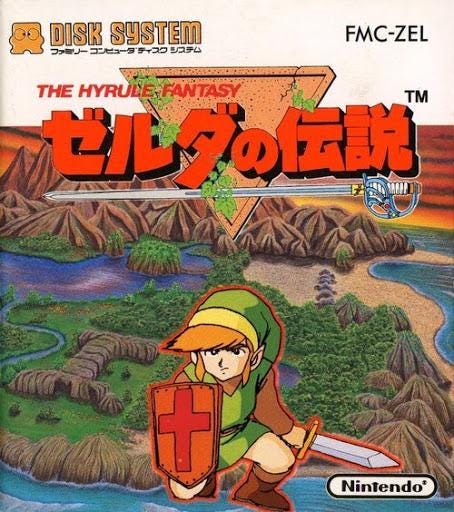
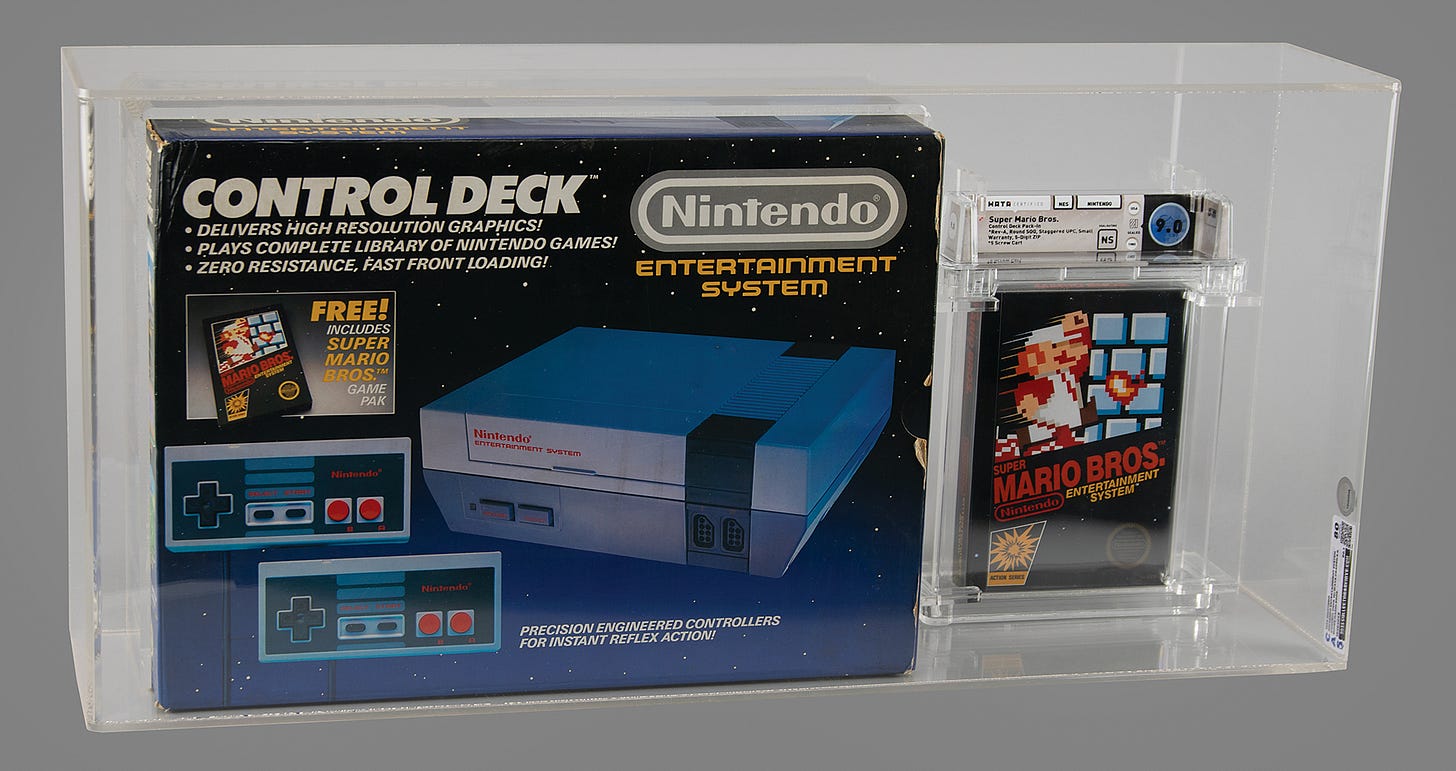

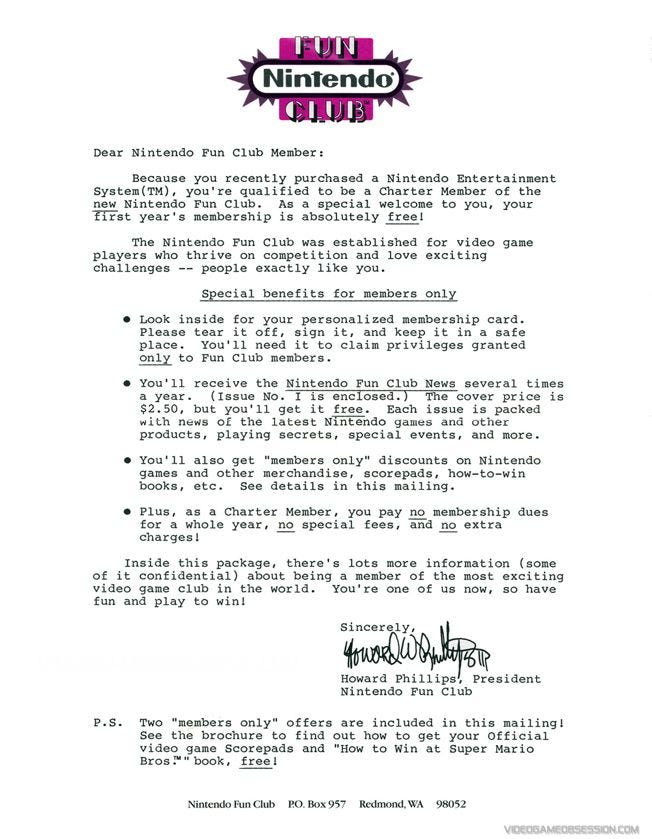

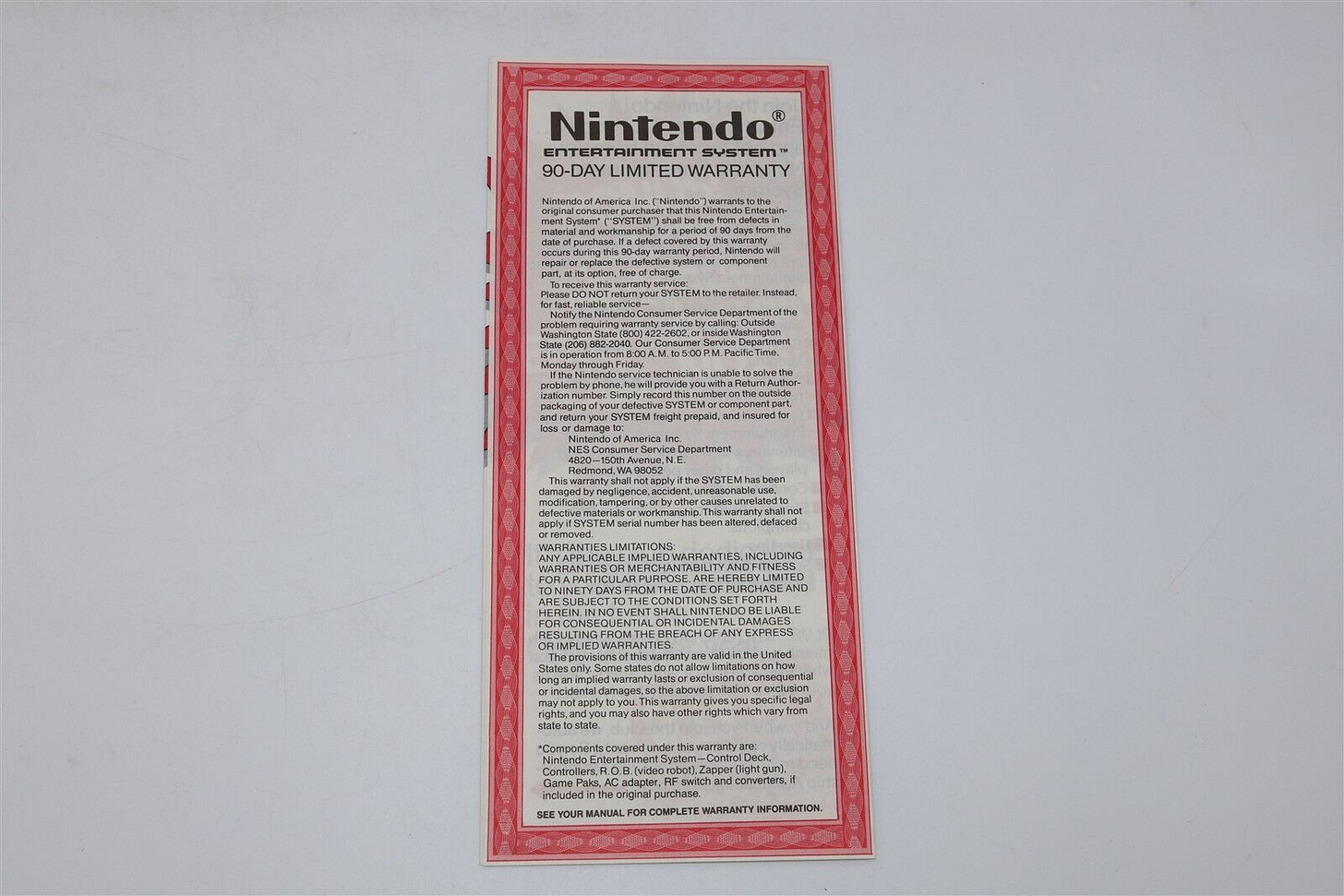






Pro Wrestling 2-Player was so much damn fun! I was a Nintendo Power subscription kid.
Oh man, that newsletter takes me back. I mentioned before that I had two issues of it -- is that all there were before Nintendo Power? I had forgotten about the membership card but as soon as I saw that photo, the memories came back. As a child, I had a wallet to keep birthday and Christmas money in. I also kept that Nintendo Fun Club membership card in there for the majority of my childhood. Didn't want anyone doubting my Nintendo fan credentials.
Of the games you reviewed, I played Trojan the most, and I'm generally with you. Pretty rough, but playable. I remember thinking as a kid it was an awesome concept that you had a shield and wishing more games had defensive options like that, even if the shield in Trojan barely works. You could say that this foreshadowed the modern era, in which defensive options like dodge rolls and parries are basically standard in action games. I also liked the 1v1 option, played that some with a friend. This was another thing that I remember wishing more games did: throw in a 1v1 mode just as a fun, low-effort afterthought. What if games like Legend of Zelda included a very basic 1v1 mode, just to see who's the better Link?
Other classic games that I know did this: NES Double Dragon, Turtles in Time. Probably others that I don't know about.
I guess one thing that comes out in my NES reflections is I was apparently really hungry for the fighting game genre to be invented!